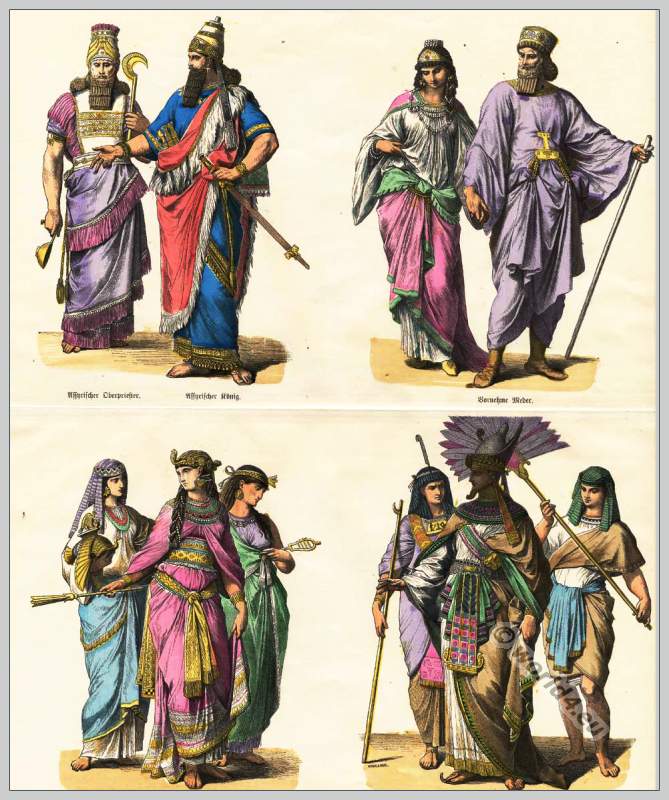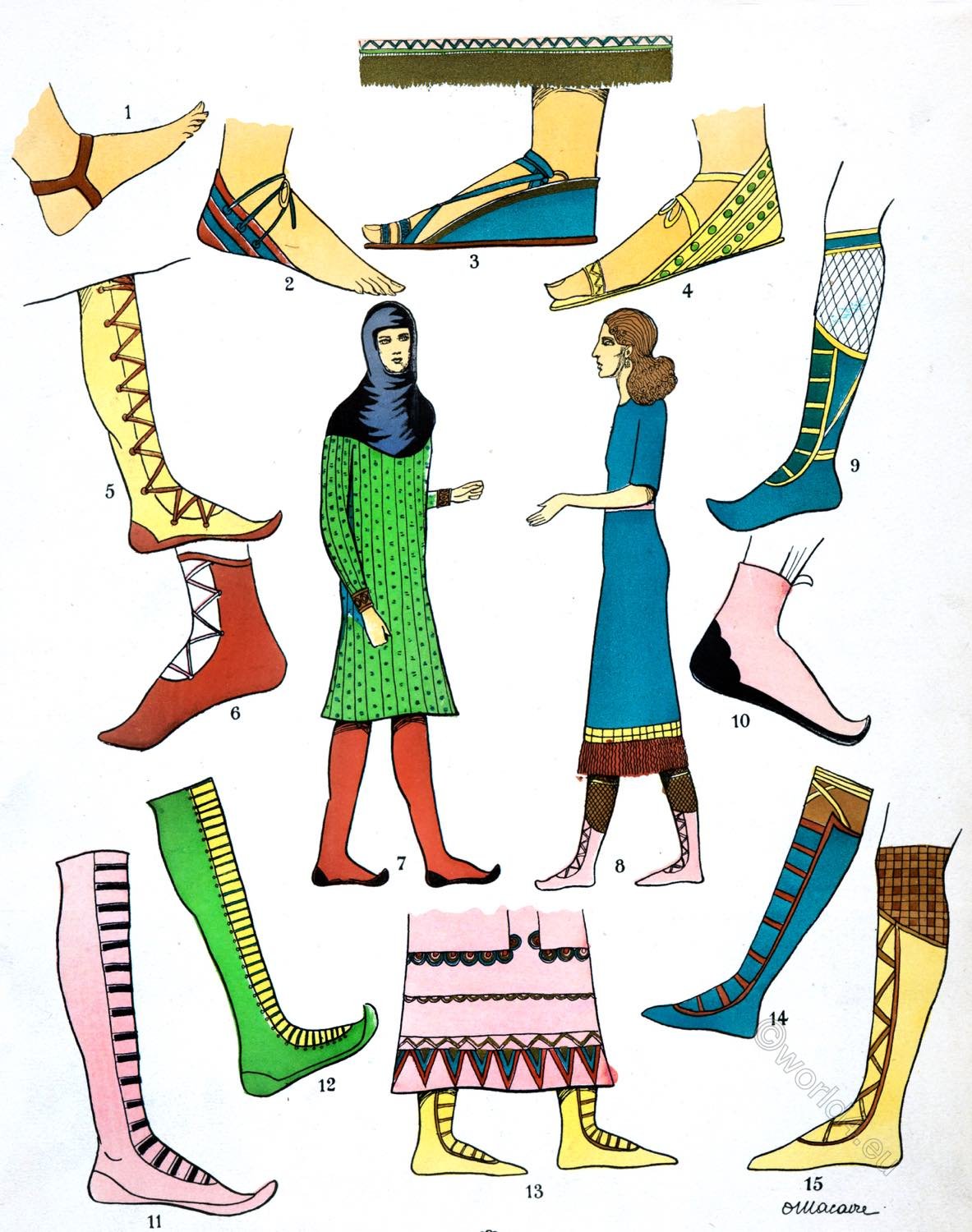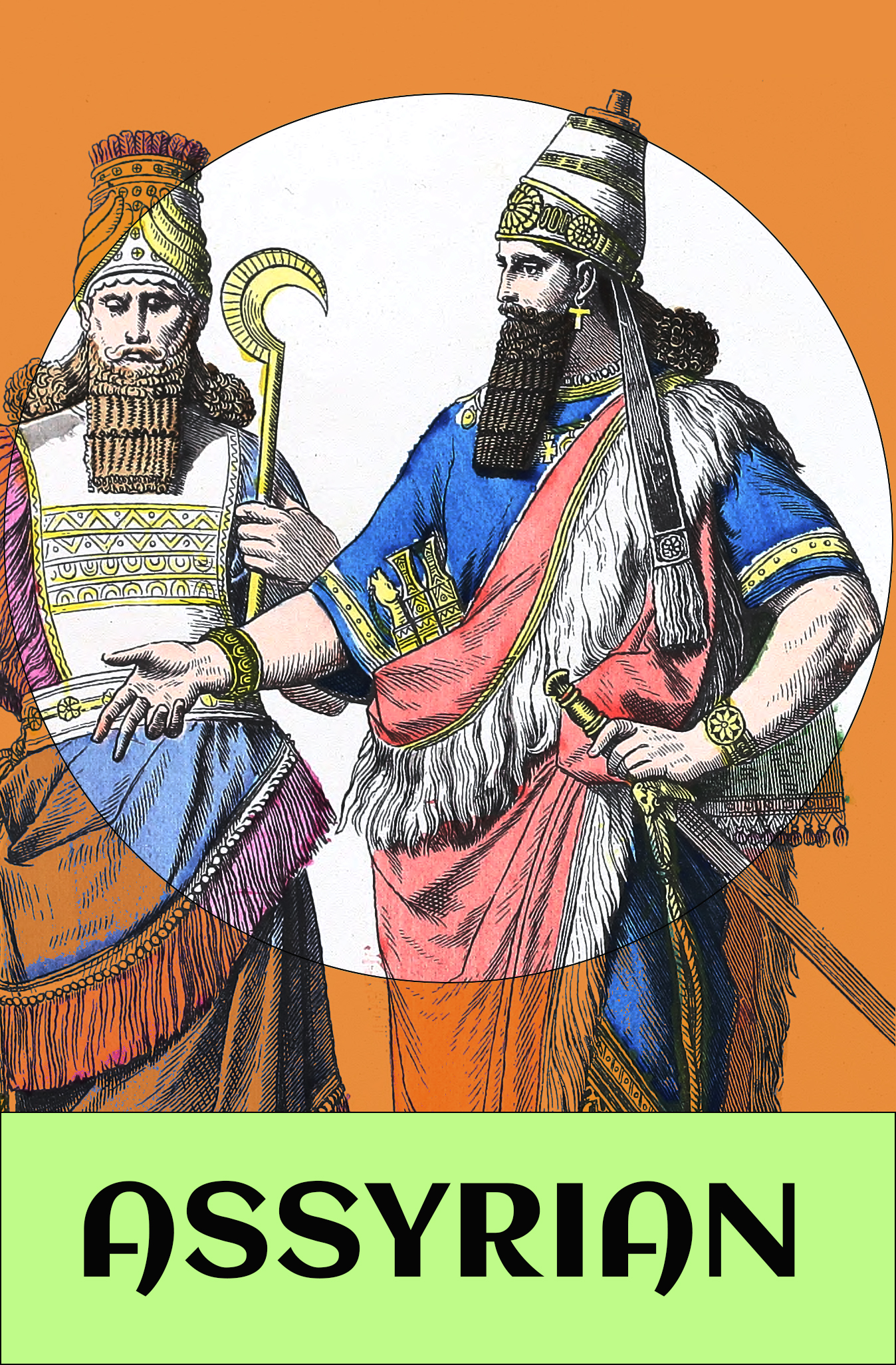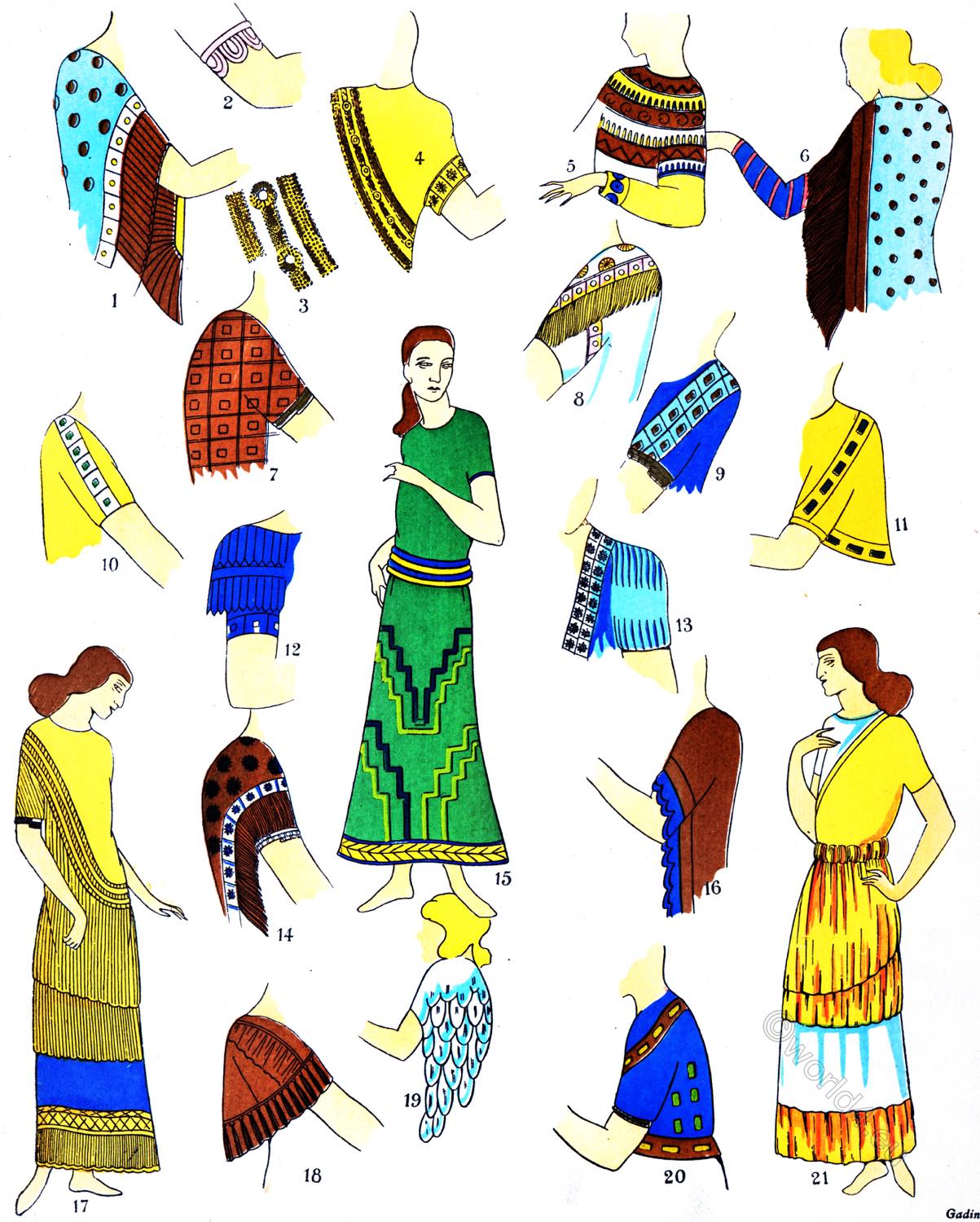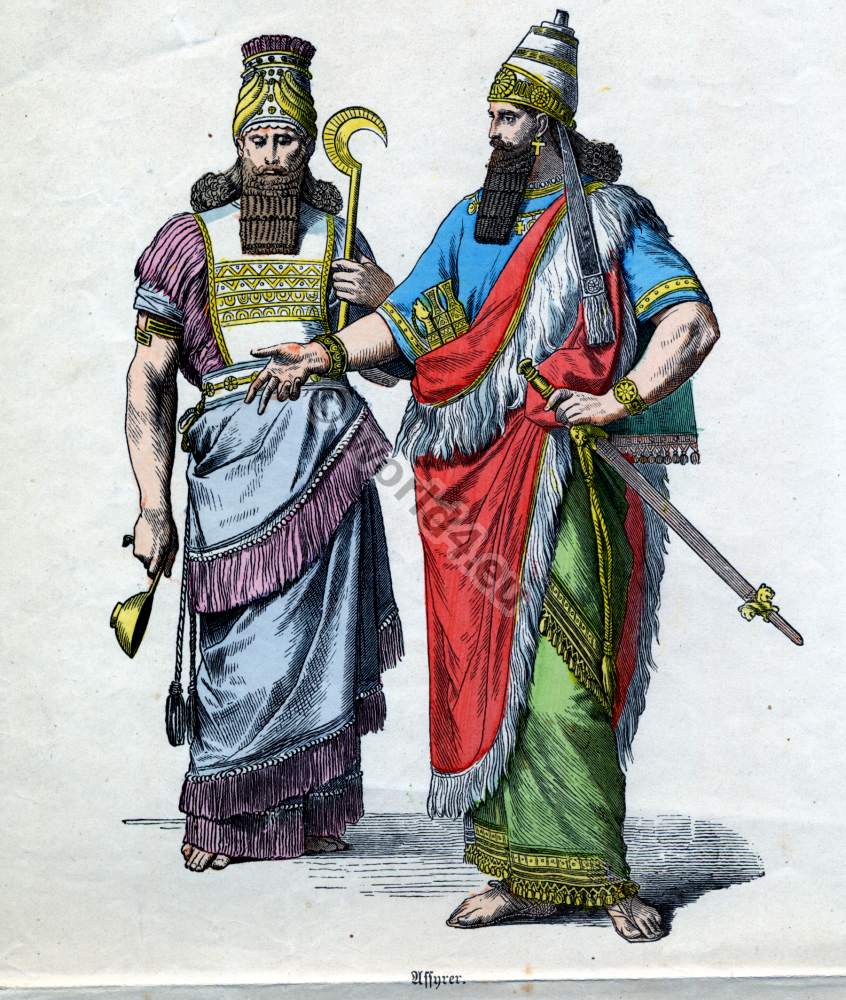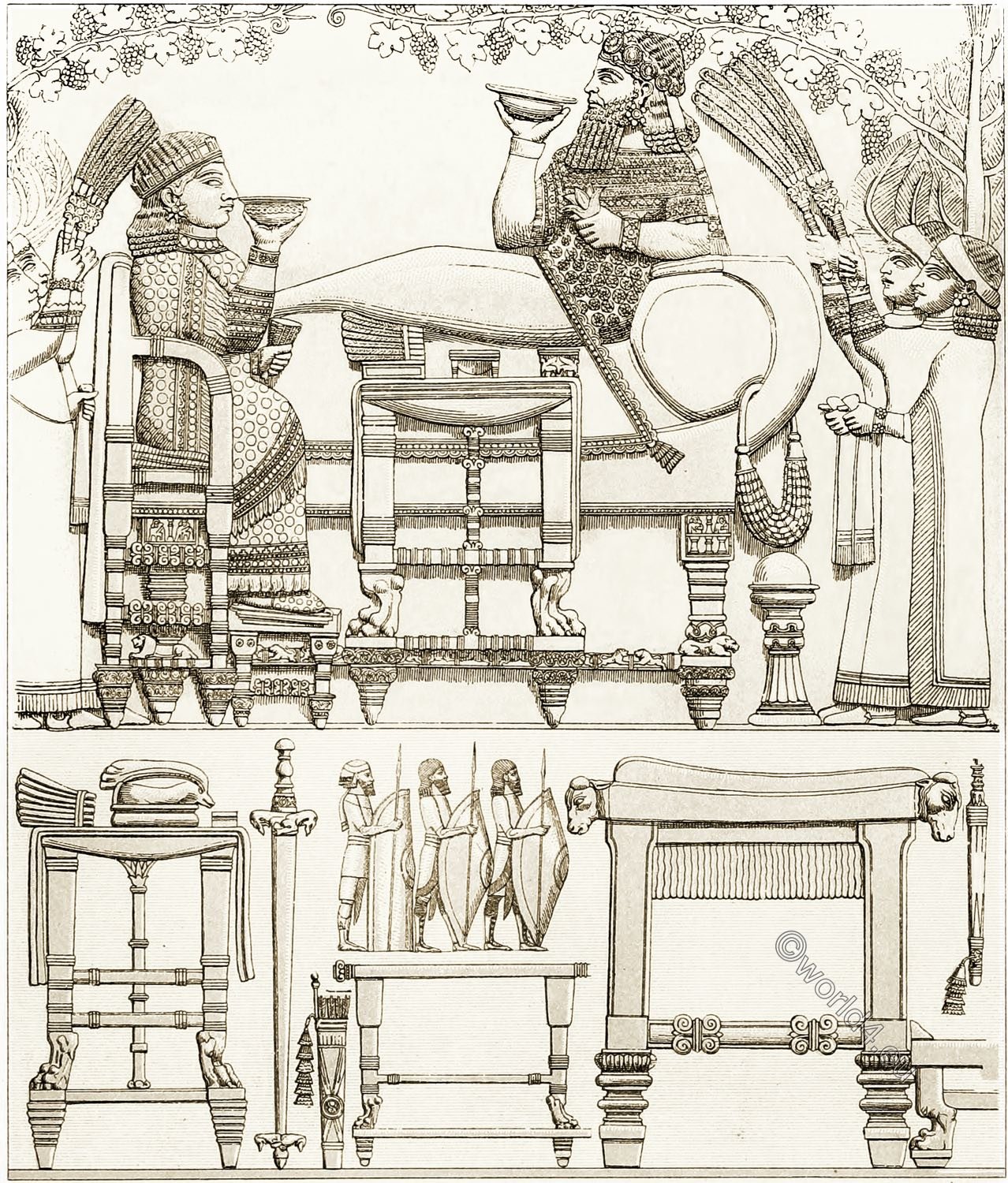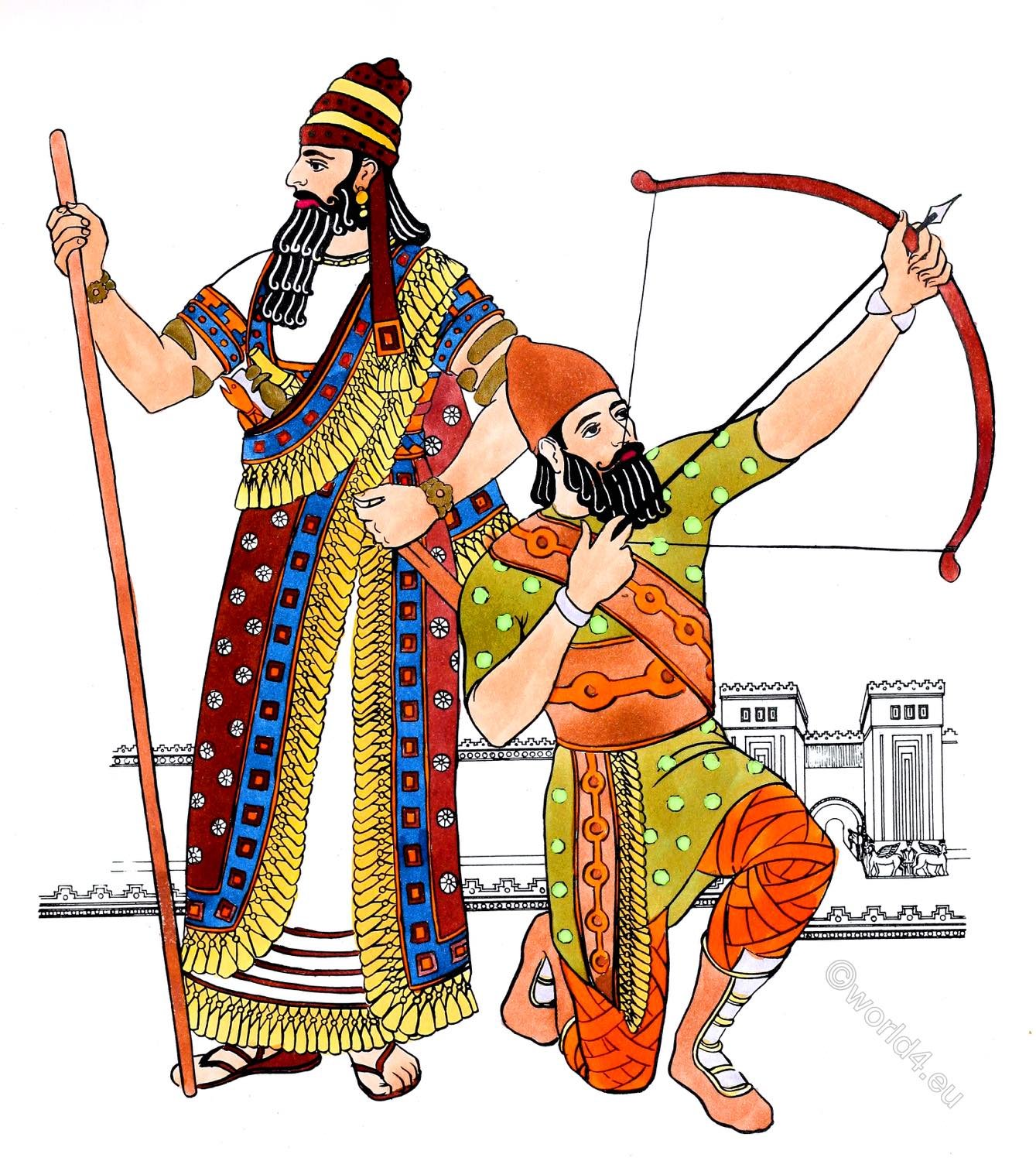
PLATE NO.5
ASSYRIAN. KING, ARCHER.
800-500 B. C.
The Assyrians were a great warlike people who conquered the Near East and were rulers of much of Western Asia in ancient times. They even campaigned as far to the west as Egypt, and there are records of treaties made by Assyria’s Kings with Egypt’s Pharaohs. Their capital was the famous city of Nineveh; and one might imagine the king and his archer, shown here, walking in the streets of this great city of biblical times.
Although the king’s costume looks very complicated, it is really a simple, barbaric outfit. His hair is worn long and probably elaborately curled. It is combed straight back behind the ears and falls to the shoulders. His moustache and beard are also carefully combed and curled. On his head he is wearing a tiara. It is not unlike the Pope’s triple-crowned headdress, which is known by the same name. It is a tall, half stiff, pointed cap made either of leather or cloth and decorated with a strip of patterned material or painted leather wound around it. Hanging down from each side of it are leather flaps known as lappets. The lappets on this particular headdress are trimmed with fringe. Some were even jewelled.
He is wearing a short-sleeved, long fringed tunic. It is like the tunic on the kneeling figure, except for length and fringe trimming. The sleeves are not set in but are cut in one piece with the body of the garment. Over this comparatively simple tunic, which is decorated only on the edges, a large shawl has been draped. One narrow edge has been folded down at the top and thrown over the left shoulder, hanging down the back in a double fringed flap. The material is very heavy and stiff; it does not fall in graceful folds, nor does it lend itself to natural draping. It requires girdling, arranging, and very probably cutting.
Over the large leather girdle is worn a thin belt. This double belt is characteristic of Assyrian costume. Through the fold of his shawl, the king wears his great sword and several symbolic staves and cudgels of one sort or another. Note all the bracelets, armbands, and earrings.
The Assyrians were warriors, as their costume shows, with its heavily ornate, barbaric splendour. They wore much more jewellery than the Persians, who followed them as the rulers of the Near East.
The archer is wearing what is called a “Phrygian bonnet.” It is somewhat like the modern fez. It is made either of felt, cloth, or leather. His tunic is like his king’s, only it is much shorter. He has draped about his shoulder and waist a narrow shawl with a long fringed end that hangs almost to his knee. He has covered his legs with strips of cloth that have been wound around – almost woven – very carefully. This winding of leather or cloth strips over the legs was very common in ancient Assyria.
Besides the cloth strips, the archer is wearing high leather boots made with a high tongue and horizontal lacing. They look quite soft and were probably comfortable. The king is wearing a simple leather-soled sandal that was quite common among primitive peoples. The Assyrians, like the Egyptians, very often went barefooted.
Source: Museum Extension Project. History of Costume.
Continuing
Discover more from World4 Costume Culture History
Subscribe to get the latest posts sent to your email.

